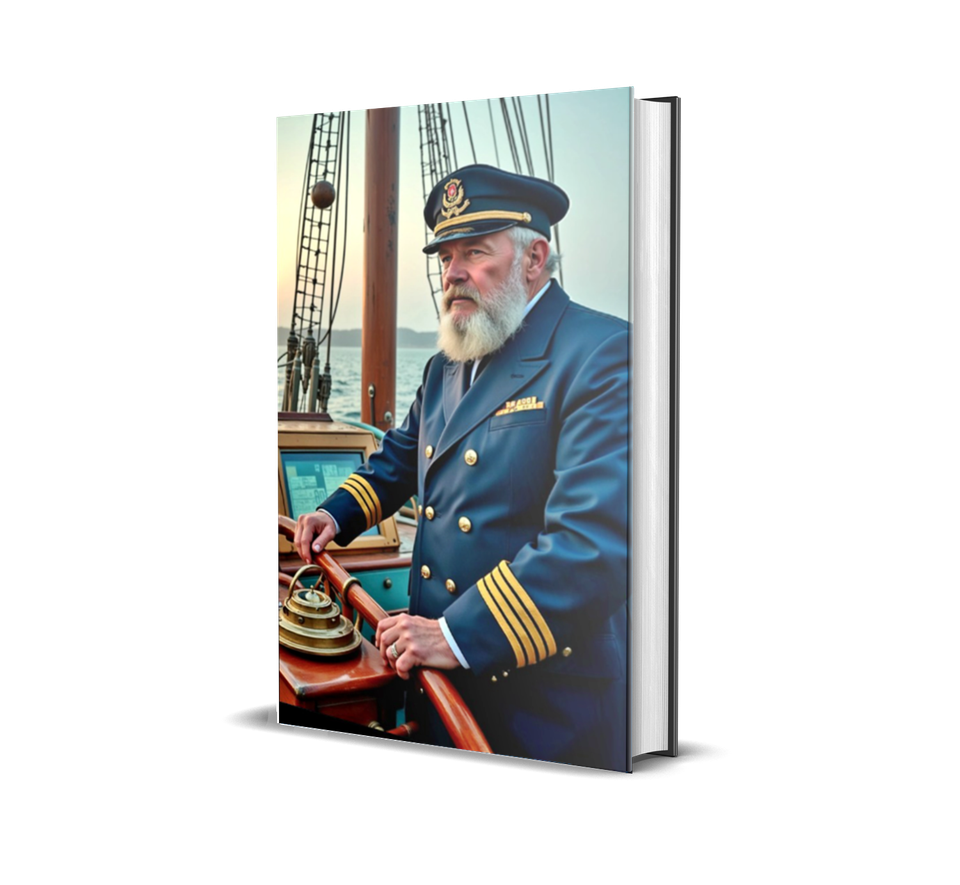The Voyage of Halvor Skramstad

By AI-ChatGPT5-T.Chr.-Human Synthesis-14 August 2025
Autumn, 1940 – The North Atlantic.
The wind clawed at the lifeboat as grey waves rose higher than the masts of the ship they had abandoned. Halvor Skramstad gripped the oar until his knuckles whitened. Hours earlier, the MS Tomar of Tønsberg had been split apart by a German torpedo near Iceland.
The shock of the blast still echoed in his ears – the roar, the splintering steel, the desperate scramble to lower the boats before the cold black water swallowed them whole. Many didn’t make it. But Halvor did. And survival meant something more than just living through the night – it meant another chance to serve. By dawn, they were spotted by a British escort vessel. The lifeboat was hauled aboard, its half-frozen occupants given blankets and mugs of steaming tea. Halvor didn’t speak much. He knew this was only the beginning. Ships were always needed, and he was a sailor.
Autumn, 1940 – The North Atlantic.
The wind clawed at the lifeboat as grey waves rose higher than the masts of the ship they had abandoned. Nineteen-year-old Halvor Skramstad gripped the oar until his knuckles whitened. Hours earlier, the MS Tomar of Tønsberg had been split apart by a German torpedo near Iceland. The shock of the blast still echoed in his ears – the roar, the splintering steel, the desperate scramble to lower the boats before the cold black water swallowed them whole.
Many didn’t make it. But Halvor did. And survival meant something more than just living through the night — it meant another chance to serve.
By dawn, they were spotted by a British escort vessel. The lifeboat was hauled aboard, its half-frozen occupants given blankets and mugs of steaming tea. Halvor didn’t speak much. He knew this was only the beginning.
That year, Halvor became part of a brotherhood that history would later call the krigsseilere — the Norwegian war sailors. Over 30,000 civilian mariners served in the convoys, carrying food, fuel, and weapons across oceans under constant threat from U-boats, bombers, mines, and storms. Around 3,700 would never return. Four hundred seventy-three ships would be lost.
These men were not soldiers. They were ordinary seamen, cooks, engineers, and deckhands, drawn into a war that kept them far from home for years at a time. Many never saw their families again until the war ended — if they lived to see it at all.
October 1940.
The docks at Clydebank smelled of coal smoke, saltwater, and urgency. Britain was fighting for its life, and every berth seemed filled with ships loading war cargo under the watch of armed sentries.
Halvor Skramstad stood on the quay, duffel bag over his shoulder, staring up at the vast black hull of MT Liberia. She was a giant – sixteen thousand tons of steel and danger. Her decks were high above the waterline, her belly filled with the most volatile cargo a ship could carry: aviation fuel.
The mate met him at the gangway.
“Skramstad? You’re the new lettmatros?”
“Aye,” Halvor replied in English, his Norwegian accent thick.
The mate gave a curt nod. “Get your gear stowed. We sail on the tide.”
Below decks, the air smelled faintly of oil and hot steel. Halvor found his bunk in a cramped cabin shared with three others – two Norwegians and a Scot. They shook hands quickly, no time for introductions before the engines rumbled to life.
By afternoon, the Liberia was sliding out into the open sea, part of a convoy of tankers, freighters, and armed trawlers. A pair of corvettes took position at the flanks, their crews scanning the horizon for the tell-tale ripple of a periscope.
For the next weeks, Halvor worked watches on deck and at the helm, knowing every hour could be their last. Somewhere back in Liverpool, Muriel Shannon — the young Irish woman he loved — waited for word. She didn’t know where he was or when, if ever, he would return.
In Bergen, thousands of miles away, other wives and children of Norwegian sailors lived through the same uncertainty. They queued for rations under German occupation, listened to air raid sirens at night, and scanned each day’s casualty lists. Some, like the wife of Bergen sailor Alfred Garnes — whose story would later inspire the 2022 film Krigsseileren — would spend the entire war raising children alone, never knowing if their husbands were alive or dead.
The emotional burden was as heavy as the danger at sea. The convoys fought not only the enemy but the creeping despair of isolation, the knowledge that their families were suffering without them.
Halvor’s convoy soon faced the full fury of the war. A flare in the night. The dull, hollow boom of a torpedoed freighter. The order to scatter. U-boats hunting in packs. Then, days later, a formation of German bombers screaming in at wave-top height.
One near miss could have lit the Liberia like a torch. Yet by skill, luck, and sheer stubborn will, they reached the safety of the Mersey River.
When the ship docked in Liverpool, Halvor spotted Muriel on the quay. For one night, they were simply two young people in love, walking cobbled streets, sharing beer and laughter in a city still battered by the Blitz.
The next morning, MT Liberia sailed again. Britain’s fuel tanks had to be kept full, and the war would not wait. Halvor knew he was returning to the gauntlet, as did every man aboard. But like the thousands of Norwegian war sailors whose lives would later be immortalized in Krigsseileren, he also knew this: as long as the ships kept sailing, there was still hope.
